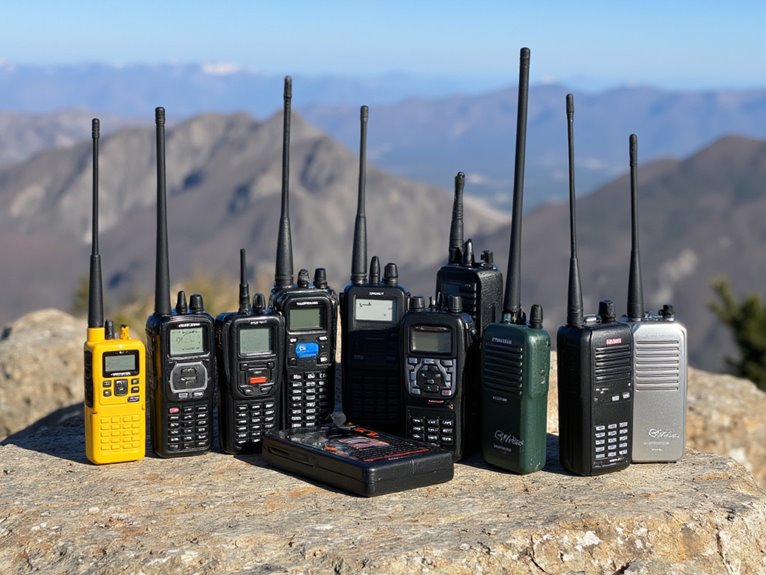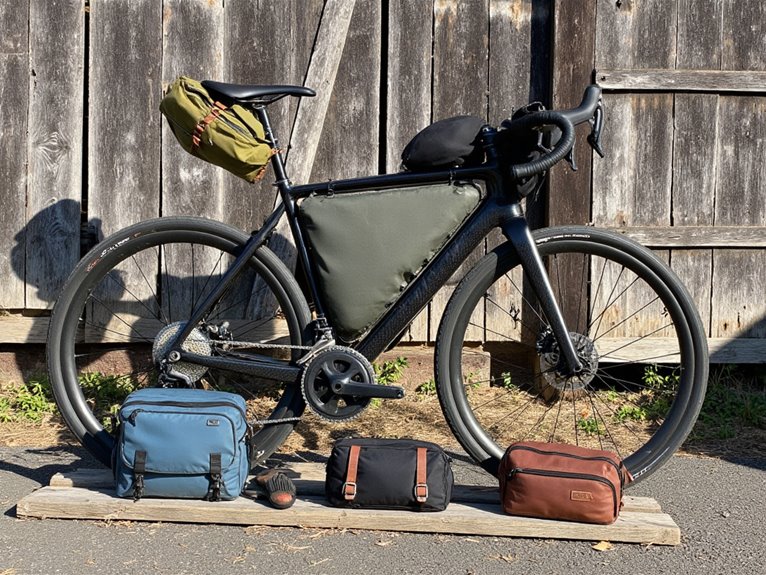At What Point Do You Need Crampons?
You need crampons when the terrain's steepness, snow's hardness, and risk of slipping or falling exceed your ability to maintain secure footing without them. Evaluating trail conditions, ice and snow, and your own footing needs can help determine when crampons are necessary. Consider the slope's angle, ice thickness, and likelihood of hidden hazards. Appraise your hiking style, weight, and gear to guarantee you're prepared. If you're unsure, it's better to err on the side of caution and wear crampons early – the consequences of a fall can be severe. There's more to learn about making the right call.
We are supported by our audience. When you purchase through links on our site, we may earn an affiliate commission, at no extra cost for you. Learn more. Last update on 20th January 2026 / Images from Amazon Product Advertising API.
Reading the Trail Conditions
When venturing into icy or snowy terrain, the ability to accurately read trail conditions is crucial, as it allows you to anticipate and prepare for potential hazards and make informed decisions about your route.
Pay attention to the terrain's angle, aspect, and elevation, as well as the time of day and recent weather patterns.
Look for signs of recent avalanches, rockfall, or other hazards.
Observe the snow's texture, color, and depth, and check for any inconsistencies or anomalies.
Take note of the trail's compactness and whether it's heavily trafficked.
Assessing the Ice and Snow
To accurately assess the ice and snow, it's essential to evaluate its hardness, density, and crystal structure, as these factors will substantially impact the effectiveness of your crampons and overall safety on the terrain.
Hard ice, for instance, requires more aggressive crampons with sharper points, while softer snow may only need lighter, more flexible crampons.
Density is also vital, as dense snow can support more weight, while less dense snow may require more caution.
Crystal structure, whether it's granular, powdery, or icy, will also influence the type of crampons needed.
Evaluating Your Footing Needs
When evaluating your footing needs, it's essential to assess the specific demands of your terrain.
Will you be traversing icy surfaces, where every step requires precision and control?
Or will you be tackling steep slopes, where a single misstep could have serious consequences, making it vital to evaluate the risk of slipping and falling.
Icy Terrain Ahead
Evaluating your footing needs on icy terrain requires a thorough assessment of the conditions you'll encounter, including the slope's angle, the ice's thickness, and the likelihood of hidden crevasses or other hazards.
Consider the type of ice you'll be traversing – is it hard, blue ice or softer, more porous glacier ice?
Are there any visible cracks or signs of recent avalanche activity?
Take note of the weather forecast, as changing temperatures and precipitation can greatly impact the stability of the ice.
By carefully evaluating these factors, you can determine whether crampons are necessary to guarantee safe and secure footing on your icy journey.
A thorough assessment will help you make an informed decision about the gear you need to stay protected.
Steep Slope Considerations
Steep slopes demand attention to footing needs, as even a slight miscalculation in traction can have devastating consequences on icy terrain.
When navigating steep slopes, it's essential to assess the angle of the slope and the surface conditions.
Ask yourself: Is the slope icy, rocky, or covered in loose debris? Are there any obstacles or hazards that could impede your progress or increase your risk of slipping?
Consider the weight and bulk of your gear, as well as your own physical abilities and limitations.
Risk of Slipping
On steep slopes, every step counts, and even the slightest loss of traction can have far-reaching consequences, making it crucial to accurately gauge the risk of slipping.
Evaluating the risk of slipping involves considering several factors, including the angle of the slope, the type of terrain, and the conditions of the surface.
For instance, icy or rocky surfaces pose a higher risk of slipping compared to snow-covered or grassy slopes.
Additionally, the weight and type of footwear, as well as the presence of obstacles or debris, can also impact the risk of slipping.
Considering Your Hiking Style
Your hiking style is a crucial factor in determining the type of crampons that will best suit your needs, as it directly influences the terrain, pace, and overall demands you'll place on your equipment.
If you're a fast-paced hiker who tackles challenging terrain, you'll require crampons that can keep up with your aggressive pace.
On the other hand, if you're a more leisurely hiker who sticks to well-groomed trails, you may prioritize comfort and flexibility over raw performance.
Considering your hiking style will help you identify the specific features you need in a crampon, such as weight, material, and binding system.
Understanding Crampon Types
Crampons come in various types, each designed to cater to specific hiking requirements, from lightweight and flexible models for casual winter walks to rugged and aggressive designs for tackling demanding alpine ascents.
For instance, recreational crampons are ideal for casual snowshoeing or winter hiking, featuring a lightweight and compact design.
Meanwhile, mountaineering crampons are designed for more aggressive terrain, boasting a more aggressive tread pattern and a sturdier build.
Then there are ski mountaineering crampons, which combine the features of both, offering a balance of agility and traction.
Understanding the different types of crampons available is essential in selecting the right pair for your specific hiking needs.
Making the Call: To Crampon or Not
In many winter hiking scenarios, the decision to wear crampons can be a vital one, as it directly impacts both safety and overall hiking experience.
When contemplating crampon use, consider the terrain, snow conditions, and your personal comfort level.
If you're tackling steep, icy, or hard-packed snow, crampons are likely a necessity. However, on gentle slopes or in deep powder, they may not be needed.
Assess the surface: if you're slipping or struggling for traction, it's time to break out the crampons.
Remember, it's better to err on the side of caution and don the crampons early rather than risking a fall.





